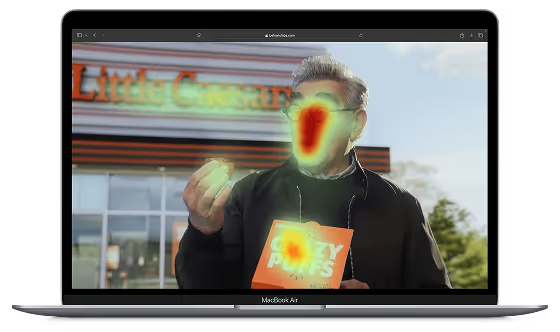Performance-based marketing can quickly start to feel off, like you're stuck in a rut. You’re pouring resources into ad campaigns, but not seeing the expected progress.
You might feel a bit stagnant, questioning the effectiveness of your strategies, and seeking new avenues to break through.
We get it, we’ve been there too.
Fortunately, there’s a way out of this—a way to plant the seeds.
When does performance marketing fall short?
The vast majority of potential buyers aren't actively searching at any given moment, and simply relying on performance channels leaves a significant chunk of the market untapped. And by significant, I mean a staggering amount – you miss 85-95% of potential buyers.
But don’t just take our word for it.
The brilliant marketer Tom Roach describes the phenomenon of being unable to break through this limitation as a “performance plateau”. And it’s nearly impossible to overcome this with performance marketing alone.

So what can you do? Many brands have already realized this. Adidas is a prime example of moving away from performance-centered marketing to building a long-lasting brand presence.
You guessed it—this is where the magic of brand marketing comes into play.
Why is brand marketing essential?
Think of brand marketing as a conversation starter, a way to tap into the subconscious minds of those out-of-the-market consumers.
It's about building emotional connections and forging lasting brand associations – long before future buyers are ready to buy. This emotional connection fuels brand growth and ultimately, profits.
Simply put: brand marketing creates the desire, and performance marketing swoops in to capture it.
The ideal marketing mix for fast-growing companies leans heavily towards brand building (think 60-80%), with the remaining portion dedicated to performance-driven tactics.
And even though the brand marketing titans are still divided on what the percentages are, they agree on one thing: brand marketing is absolutely essential.
Is there a way to measure brand marketing effectiveness?
I know what you may be thinking: “Isn't brand marketing just a fluffy, feel-good concept that I am unable to evaluate whatsoever?”
Not anymore.
Advancements in brand science and subconscious measurement have led to a more accurate picture of brand ROI.
Technology is also playing a pivotal role in this brand-centric revolution. Brand tracking solutions empower marketers to optimize their brand ads, predict ROI, and even measure the subconscious impact of their campaigns.
This data-driven approach allows for smarter decision-making and maximizes the effectiveness of marketing efforts—especially when you're competing in a saturated market.
One of the single most important metrics to look out for when evaluating your brand’s performance is brand salience. It uncovers which brands are top-of-mind as opposed to others which are buried deep within the customer’s brain. If they’re present at all.
Brand marketing plays a crucial role in nurturing salience.

The bottom line
Brand marketing is crucial for sustained growth, especially for fast-growing companies.
While performance marketing is effective in targeting early adopters, relying solely on it can lead to a performance plateau, missing out on a substantial portion of the market.
The key lies in incorporating brand marketing into the mix. Tracking its efficiency is now possible thanks to advanced brand tracking solutions which can peek into the customer’s subconscious.
Key metrics such as brand salience become pivotal in evaluating a brand's performance because they allow marketers to keep track of your brand-building efforts.
The conclusion: a balanced approach, combining brand and performance marketing, is the ultimate recipe for a successful marketing strategy.
Remember the early days of online marketing? Clicks were the holy grail, promising instant conversions and seemingly boundless ROI.
But somewhere along the way, many fast-growing companies found themselves stuck in a "now or never" mindset, neglecting the power of planting seeds for the future.











.avif)








